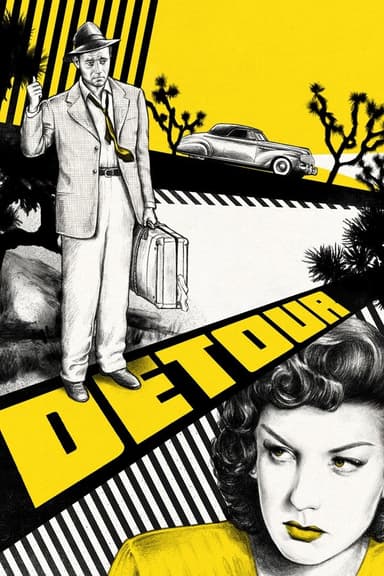
Out of the Past
1947 • Crime, Thriller
The peaceful life of a gas station owner is disrupted when a man from his past arrives in town and forces him to return to the dark world he had tried to escape.
Runtime: 1h 37m
Why you should read the novel
Geoffrey Homes’s novel, Build My Gallows High, offers a richer and more immersive experience than its cinematic adaptation. The book delves deeper into the protagonist’s psyche, providing readers with nuanced motivations and internal conflicts beyond what’s possible on screen. Through its evocative prose and sharp dialogue, readers can feel the tension and desperation that define classic noir, enjoying subtleties that might be glossed over in the film’s brisk runtime.
Exploring the novel allows for a more comprehensive understanding of the story’s moral complexity. The internal monologue and detailed exposition let readers witness not only the protagonist’s actions but also his reasoning and personal justifications, making his journey more relatable and engaging. The interplay between fate, regret, and longing is layered with psychological insight, bringing a level of authenticity and introspection that might elude viewers of the adaptation.
Moreover, the novel invites readers to imagine their own visual interpretations, making each reading unique. The richness of the setting and atmosphere, vividly described in prose, creates a powerful sense of place. Without the time and budget constraints of filmmaking, the narrative can sprawl, letting suspense build naturally and allowing for a deeper, more personal connection to the unfolding tragedy.
Adaptation differences
One key difference between Out of the Past and its source novel, Build My Gallows High, lies in character development. The book spends more time exploring the protagonist’s past and delving into his motivations, offering greater insight into his mindset, whereas the film condenses these aspects for pacing, occasionally resulting in a less nuanced portrayal.
Another change concerns the plot structure and pacing. The novel unfolds more gradually, with scenes and events allowed to linger and intensify the suspense. In contrast, the film streamlines sections, omitting certain subplots or characters altogether, and rearranges sequences for dramatic impact, thus altering the rhythm and effects of key revelations.
The tone in Homes’s novel is often grittier and more introspective. Elements of inner conflict, fatalism, and ambiguity are more pronounced in the book, giving the narrative a darker, more psychologically complex edge. The film, while still noir, sometimes softens or visually glosses over these themes to maintain audience engagement or satisfy production codes of the period.
Lastly, the ending of the film diverges from the novel’s conclusion. Hollywood censorship and genre expectations of the era influenced how the movie wraps up the story, making some character fates more decisive or moralizing in contrast to the book’s bleaker, more ambiguous resolution. This significant difference changes the thematic resonance, favoring cinematic closure over the novel’s haunting uncertainty.
Out of the Past inspired from
Build My Gallows High
by Geoffrey Homes











